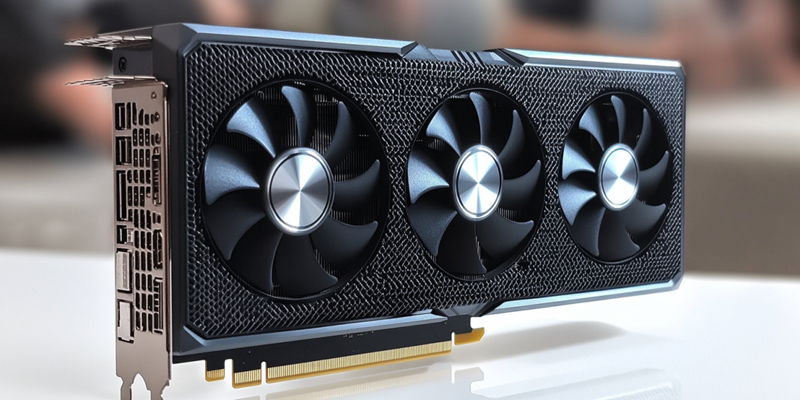Nvidia may be poised to discontinue its RTX 4090 graphics card as it prepares to launch the next-generation Blackwell GPU, the RTX 5090. Sources from the Board Channels in China have hinted at Nvidia’s plan to halt production of the RTX 4090 and the RTX 4090D variant for China, starting in October. The move seems to align with Nvidia’s historical strategy of phasing out older models to make room for newer, more advanced technology. This anticipated change is expected to reduce inventory throughout October and November, potentially leading to increased prices before the RTX 5090 hits the market.
Impending Launch of RTX 5090
Speculated Launch Windows
Reports regarding the RTX 5090’s launch date vary, suggesting different timelines that Nvidia might follow for its new flagship GPU. While some sources speculate a late-2024 reveal, others believe a January 2025 launch at the Consumer Electronics Show (CES) is more plausible. The possibility of a September 2024 release has been mentioned; however, the lack of substantial rumors and leaks makes this timeline less likely. Historically, Nvidia tends to unveil major products at high-profile industry events like CES, pointing towards an early 2025 launch as the most credible prediction.
Nvidia’s potential discontinuation of the RTX 4090 highlights a pivotal moment in the company’s product lifecycle strategy. By phasing out the current top-of-the-line model ahead of the RTX 5090’s introduction, Nvidia aims to create buzz and anticipation around its new GPU. This strategic move is meant to drive demand for the upcoming graphics card, ensuring a receptive market when it eventually launches. Given the company’s past behavior, Nvidia’s roadmap appears to be in line with its goal of maintaining a competitive edge through continuous innovation.
Consumer Considerations and Market Impact
For potential buyers, the cessation of RTX 4090 production brings up a crucial consideration: the likelihood of price increases due to reduced availability. As inventory diminishes, scarcity could drive prices higher, necessitating a strategic purchasing decision for consumers. Those eyeing the RTX 4090 may need to act quickly to secure a unit before stocks deplete or consider holding out for the RTX 5090. This impending transition is critical for gamers and professionals who require top-tier performance, as the RTX 5090 is expected to offer substantial improvements over its predecessor.
The RTX 5090’s arrival will likely come with a price tag reflecting Nvidia’s trend of positioning its flagship GPUs at premium price points. Though specific features and performance metrics of the RTX 5090 remain speculative, it’s expected to justify its higher cost through significant enhancements. This includes potentially higher processing power, more efficient energy use, and advanced graphical capabilities. Such improvements would make the investment worthwhile for users seeking cutting-edge technology capable of pushing the boundaries of what is currently possible in gaming and professional applications.
Strategic Move by Nvidia
Discontinuation of RTX 4090 and Inventory Management
Nvidia’s strategy of phasing out the RTX 4090 demonstrates its commitment to staying at the forefront of GPU technology. By halting the production of its current flagship model, Nvidia is making room for the next generation, ensuring that the market is ready for a seamless transition to the RTX 5090. This approach not only builds anticipation but also manages inventory levels effectively, preventing an oversupply of older models that could otherwise flood the market and potentially devalue newer products.
Reducing inventory throughout October and November means that buyers might experience a shortage of RTX 4090 units, leading to an increase in prices as demand outstrips supply. Nvidia’s tactic of curbing production ahead of a new launch helps maintain the exclusivity and desirability of its high-end products. This method has proven effective in the past, and it seems likely that Nvidia is once again leveraging this strategy to set the stage for the RTX 5090. Retailers may adjust their pricing schemes accordingly, capitalizing on the limited availability of the RTX 4090 to maximize profits during the transition period.
Balancing Product Lifecycle with Innovation
Nvidia’s potential discontinuation of the RTX 4090 graphics card highlights a pivotal moment in the company’s product lifecycle strategy. Insider sources from the Board Channels in China have suggested that Nvidia plans to stop producing the RTX 4090 and its RTX 4090D variant for the Chinese market starting this October. This move aligns with Nvidia’s longstanding strategy of phasing out older models to introduce more advanced technology. By phasing out the RTX 4090 series, Nvidia aims to clear out existing inventory during October and November, which could lead to a temporary increase in prices for these older models right before the RTX 5090 is released. Such adjustments are consistent with how Nvidia has historically managed the transition from one generation of graphics cards to the next. Gamers and technology enthusiasts are eagerly awaiting the official release details, as the RTX 5090 is expected to bring significant advancements in performance and capabilities, marking another milestone in Nvidia’s product lineup.

